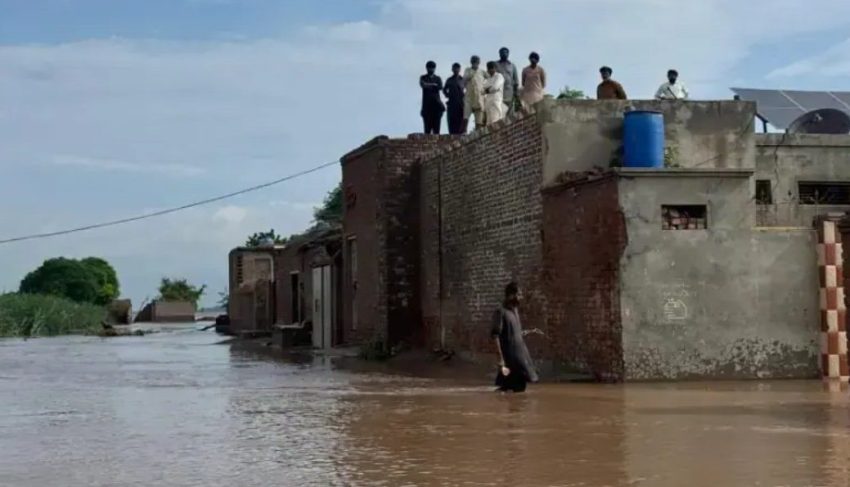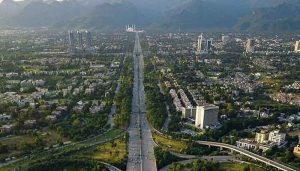The floods of 2025 struck Punjab with a force not seen in decades. Heavy monsoon downpours, combined with high releases from Indian reservoirs, drove the Sutlej, Ravi, and Chenab into simultaneous flood peaks. More than 2.4 million people were affected, and over 3,100 villages and hamlets were inundated. The deluge displaced families, submerged farmland, and threatened to tear apart the economic backbone of rural Punjab. Yet, despite the enormity of the challenge, the province’s response has been marked by discipline, foresight, and coordination—qualities that prevented the disaster from escalating into catastrophe.
Figures alone convey the magnitude of the intervention. Nearly one million people were evacuated with unprecedented efficiency. Fatalities, though tragic, remained limited to 33–41—a remarkably low figure when compared with the scope of inundation. Authorities set up more than 500 relief camps, complemented by 352 medical centers and 300 veterinary camps, providing displaced families with shelter, food, healthcare, and protection for their animals. Police and rescue services deployed over 700 vehicles and 40 boats, while drone reconnaissance guided crews to cut-off families stranded in riverine pockets. In total, 480,000–600,000 people were rescued, alongside 167,000 livestock, preserving livelihoods as much as lives.
What distinguished this response was not just the scale of deployment, but the speed of activation. Schools and government buildings were swiftly converted into relief centers. Veterinary camps distributed fodder and cared for animals, while medical units provided care to tens of thousands in camps. The decision to use drones for surveillance and rapid mapping demonstrated how technology is now embedded into disaster response, reducing delays and preventing preventable loss of life.
The groundwork for this success was laid months earlier. Punjab’s irrigation and disaster management departments refreshed contingency plans for every major headworks—Marala, Khanki, Qadirabad, Trimmu, Panjnad, Balloki, and Sulemanki—ensuring stockpiles of protective materials were pre-positioned and patrols readied. District-specific flood-fighting plans set clear evacuation routes, safe-site locations, and emergency command structures. When river gauges surged into “exceptionally high” categories at Ganda Singh Wala on the Sutlej and Jassar on the Ravi, the pre-planned drills translated into immediate action.
This is not to say the costs were minor. Agriculture bore the brunt, with cotton, maize, sugarcane, vegetables, and paddy fields submerged. Cotton losses, in particular, threaten downstream industries like textiles, Pakistan’s largest export sector. Yet, even here, foresight played a role: damage assessments began early, special agricultural surveys (girdawaris) were launched to estimate crop losses, and veterinary care was rolled out at scale to protect surviving livestock. Relief was paired with economic stabilization, ensuring that rural households could replant, rebuild, and return.
The floods also exposed how resilience is increasingly about turning hazard into resource. Punjab’s water managers, rather than rushing to flush all excess water downstream, prioritized controlled storage in natural depressions and canal systems to recharge groundwater and bank water for future dry seasons. This approach—treating floodwater as both threat and asset—is a forward-looking strategy that aligns emergency management with long-term water security.
National and regional context makes Punjab’s achievement clearer. South Asia’s floods are intensifying under climate change, with rainfall bursts becoming heavier and river systems more unpredictable. The 2022 nationwide floods killed over 1,700 people and caused US$30 billion in damages. Against that grim history, keeping casualties in Punjab’s 2025 floods to the low dozens, despite affecting millions, demonstrates the maturity of the province’s preparedness. Where in the past, last-minute panic added to tragedy, this time SMS alerts, community announcements, and disciplined evacuation turned warnings into timely action.
The challenge ahead is not only recovery but reinforcement. Embankments in vulnerable belts will need rebuilding before the next flood season, roads and bridges must be repaired to reconnect communities, and farmers require compensation packages delivered faster than bureaucratic cycles usually allow. Officials have already demanded enhanced funds from the center, seeking overdue allocations and fair compensation rates for farmers. These calls underline that flood response does not end when waters recede—it continues into rehabilitation and financial support.
Punjab’s experience in 2025 offers a template for disaster governance. It combines modern tools like drone surveillance and SMS alerts with traditional discipline in river management and community mobilization. It demonstrates that protecting livestock and crops is as crucial as saving people when rural livelihoods are at stake. And it proves that advance planning—codified contingency plans, rehearsed protocols, and pre-positioned supplies—turns what could be chaos into coordination.
The people of Punjab endured the fury of rivers this year, but they did not endure it alone. Behind the quiet headlines of evacuations and relief figures lies an extraordinary story of provincial systems absorbing the shock of one of the worst monsoon floods in memory. The Sutlej, Ravi, and Chenab may rise again, but with each season, the response grows sharper, faster, and more resilient. That is the mark of a province not simply surviving floods, but learning from them and emerging stronger each time.














